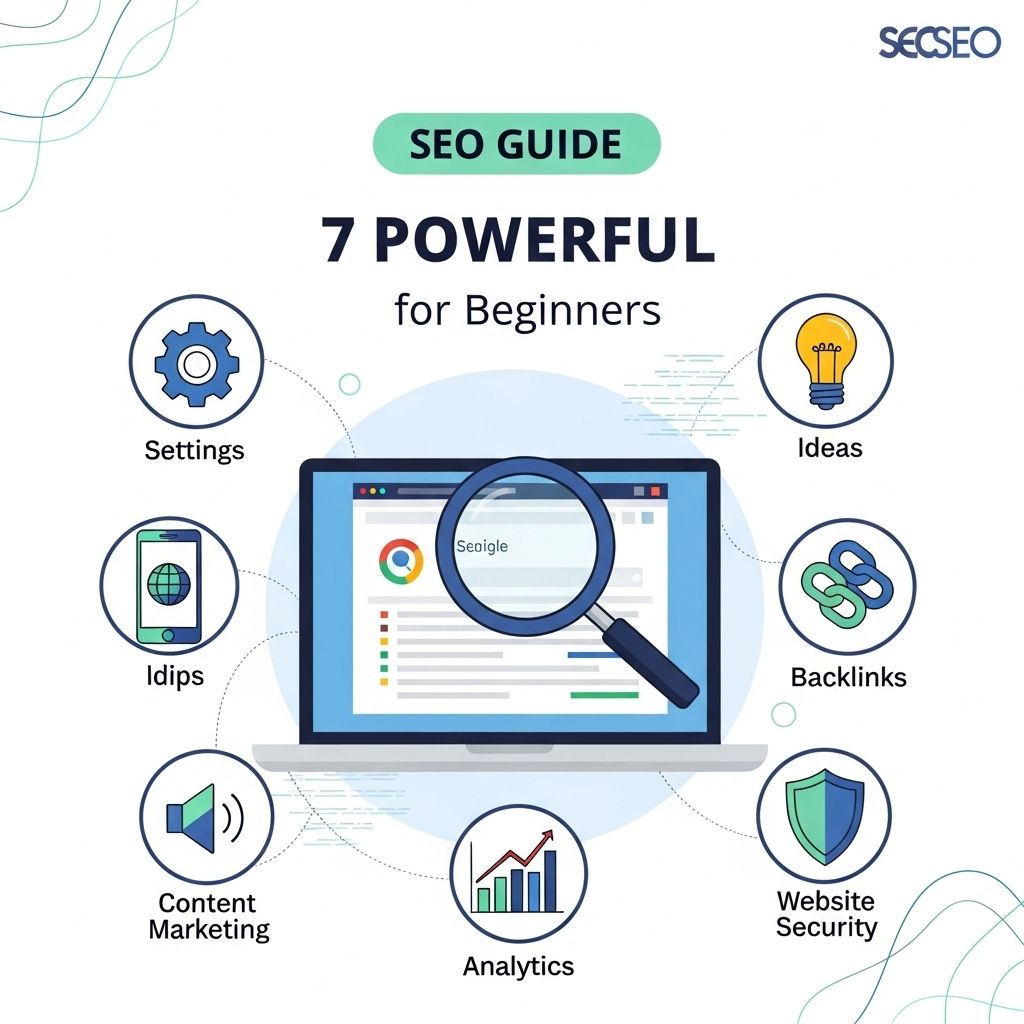In today’s digital landscape, understanding Search Engine Optimization (SEO) is crucial for anyone looking to enhance their online presence. Whether you’re a small business owner, a blogger, or a digital marketer, mastering SEO can significantly influence your website’s visibility and organic traffic. The following guide dives into essential SEO tips that will empower beginners to take their first steps toward optimizing their online content effectively.
Understanding the Basics of SEO
SEO is a multifaceted discipline that involves various strategies and techniques aimed at improving a website’s ranking on search engine results pages (SERPs). Here are some fundamental concepts to grasp:
- Keywords: The phrases and terms that users type into search engines.
- On-Page SEO: Techniques applied directly within your website, such as content optimization and HTML tagging.
- Off-Page SEO: Actions taken outside of your website, primarily focused on building backlinks.
- Technical SEO: Enhancements to the website’s backend structure and foundation.
1. Conduct Thorough Keyword Research
Keyword research is the cornerstone of effective SEO. It involves identifying the words and phrases your target audience uses to search for information related to your niche.
How to Conduct Keyword Research
- Use Keyword Tools: Tools like Google Keyword Planner, SEMrush, or Ahrefs can help you discover relevant keywords.
- Analyze Competitors: Look at the keywords your competitors are ranking for and consider targeting similar or related phrases.
- Focus on Long-Tail Keywords: These are typically less competitive and more targeted, which can lead to higher conversion rates.
2. Optimize On-Page Elements
Once you have your keywords, the next step is to optimize your website’s on-page elements. These include:
- Title Tags: Ensure each page has a unique title that incorporates the primary keyword.
- Meta Descriptions: Craft informative and enticing meta descriptions that encourage users to click.
- Header Tags: Utilize H1, H2, and H3 headers to structure your content and make it easier for search engines to understand.
Example of On-Page Optimization
| Element | Best Practices |
|---|---|
| Title Tag | Keep it under 60 characters, include primary keyword |
| Meta Description | Limit to 155 characters, summarize content accurately |
| Header Tags | Use H1 for main title, H2 for sections, H3 for subsections |
3. Create High-Quality Content
Content is a critical factor in SEO. Search engines prioritize high-quality, informative, and engaging content that meets user intent. Here are some tips for creating standout content:
- Value and Relevance: Address the needs and questions of your audience.
- Engaging and Original: Craft unique content that captures interest and encourages shares.
- Use Visuals: Incorporate images, infographics, and videos to enhance user experience.
Content Structure
Consider structuring your content using bullet points, lists, and tables to improve readability and engagement.
4. Enhance User Experience (UX)
User experience directly impacts your SEO performance. A well-optimized website should offer an enjoyable experience to visitors. Key aspects include:
- Mobile Responsiveness: Ensure your site is mobile-friendly.
- Fast Loading Speed: Optimize images and use content delivery networks (CDNs) to decrease loading times.
- Intuitive Navigation: Simplify your site’s structure to enhance findability.
Measuring User Experience
Utilize tools like Google Analytics to track user engagement metrics such as bounce rate, average session duration, and user flow.
5. Focus on Technical SEO
Technical SEO lays the groundwork for other optimization efforts. It involves improving the technical aspects of your website to help search engines crawl and index your site effectively. Key considerations include:
- XML Sitemap: Create an XML sitemap to help search engines understand your site structure.
- Robots.txt File: Use this file to guide search engines on which pages to crawl.
- Canonical Tags: Prevent duplicate content issues by specifying the preferred version of a page.
Technical SEO Checklist
| Task | Status |
|---|---|
| XML Sitemap submitted | ✔️ |
| Robots.txt file configured | ✔️ |
| Page load speed optimized | ✔️ |
6. Build a Strong Backlink Profile
Backlinks, or inbound links from other websites, are crucial for SEO. They signal to search engines that your content is valuable and trustworthy. Here are some strategies for building backlinks:
- Guest Blogging: Write articles for reputable blogs in your industry and include links back to your site.
- Networking: Engage with other content creators and seek opportunities for collaboration.
- Resource Pages: Identify and reach out to websites that list resources relevant to your niche.
Backlink Quality vs. Quantity
Focus on acquiring high-quality backlinks from authoritative sites rather than a high volume of low-quality links.
7. Monitor and Adapt Your Strategy
SEO is not a one-time task; it requires continuous monitoring and adaptation. Use analytical tools to track your progress and adjust your strategies based on performance data. Key metrics to monitor include:
- Organic Traffic: Measure the number of visitors who arrive via search engines.
- Keyword Rankings: Keep an eye on how your keywords rank over time.
- Engagement Metrics: Analyze how users interact with your content.
Tools for Monitoring SEO Performance
Consider using tools like Google Analytics, SEMrush, and Moz for comprehensive insights into your SEO performance.
In conclusion, mastering SEO takes time and effort, but by implementing these seven powerful tips, beginners can lay a solid foundation for their online success. Stay patient, remain updated on the latest trends, and keep refining your strategies to achieve the best results in the ever-evolving world of SEO.
FAQ
What is SEO and why is it important for my website?
SEO, or Search Engine Optimization, is the process of improving your website’s visibility on search engines like Google. It’s important because higher visibility can lead to more organic traffic, helping you reach a larger audience.
What are some basic SEO techniques I can use as a beginner?
Some basic SEO techniques include optimizing your website’s title tags and meta descriptions, using headers effectively, creating quality content, and ensuring your site is mobile-friendly.
How do I choose the right keywords for my SEO strategy?
Choose keywords by researching terms your target audience is searching for using tools like Google Keyword Planner, and focus on long-tail keywords that are specific to your niche.
What role does content play in SEO?
Content plays a crucial role in SEO as it provides value to users and helps search engines understand the relevance of your site. High-quality, informative content can improve rankings and attract backlinks.
How often should I update my website for SEO?
Regularly updating your website is beneficial for SEO. Aim to refresh your content, add new blog posts, and ensure all information is current to keep your site relevant and engaging.
What are backlinks and why are they important for SEO?
Backlinks are links from other websites to your site. They are important for SEO as they signal to search engines that your content is valuable and trustworthy, which can improve your site’s authority and ranking.




